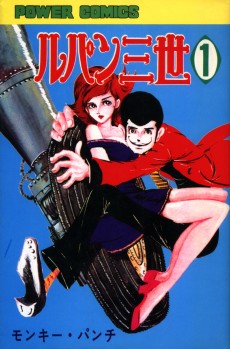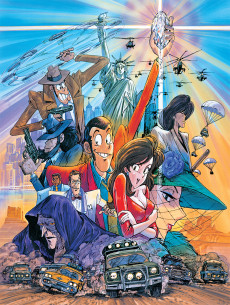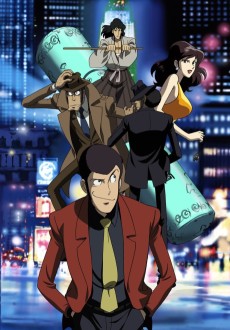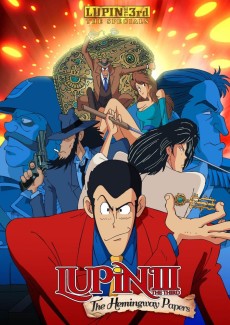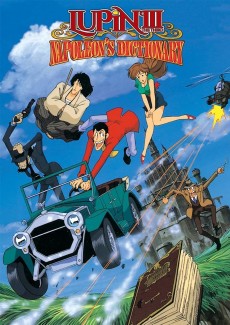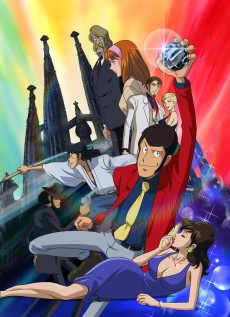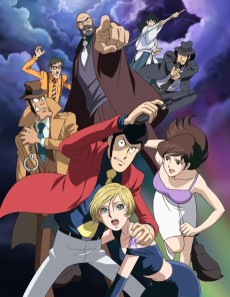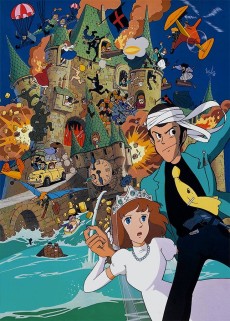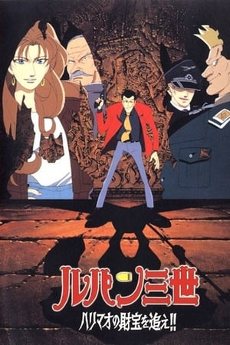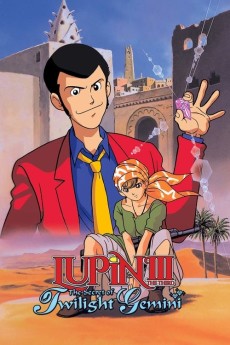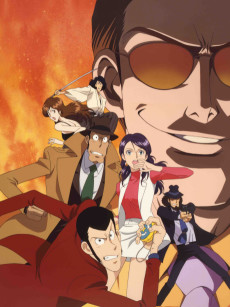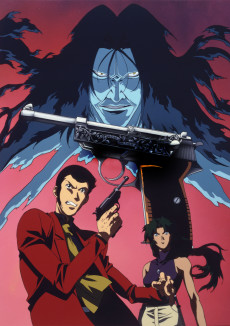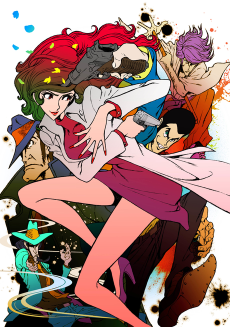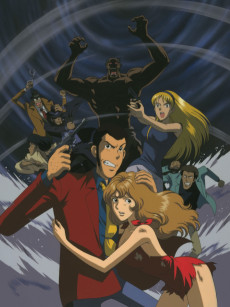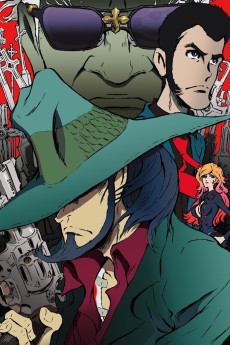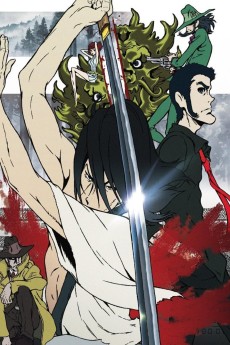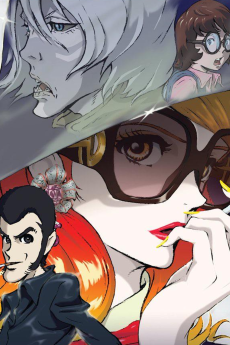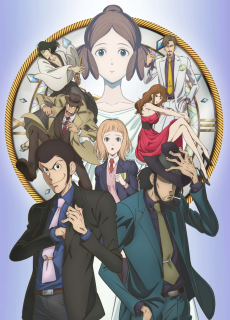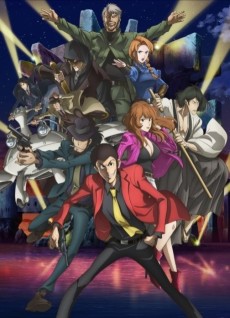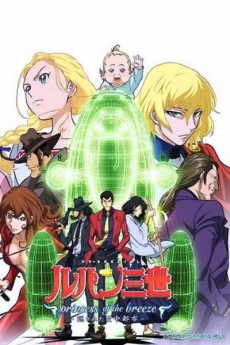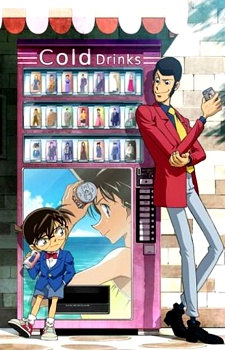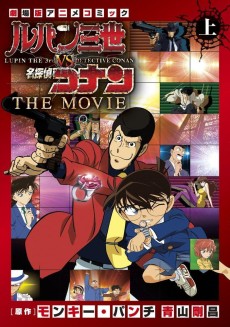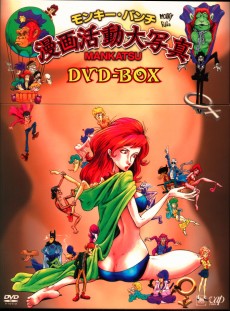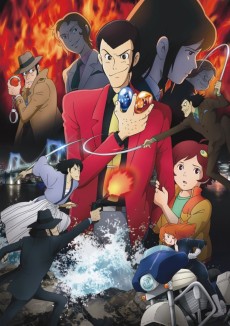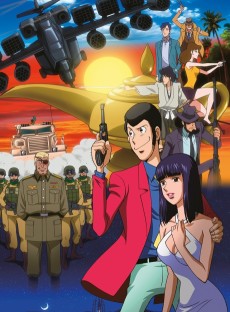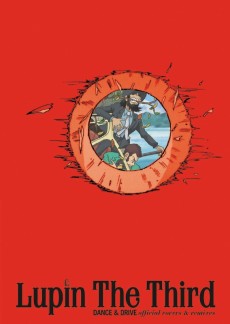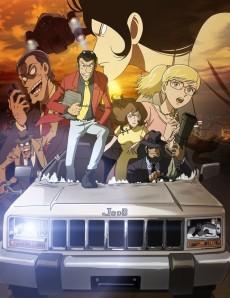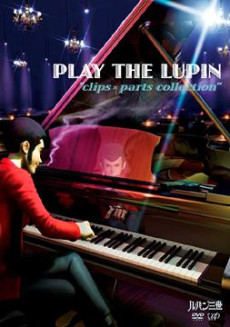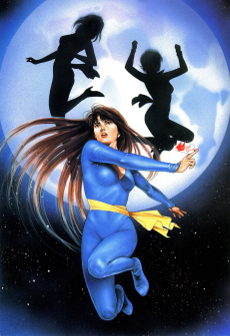LUPIN III
STATUS
COMPLETE
EPISODES
23
RELEASE
March 26, 1972
LENGTH
25 min
DESCRIPTION
Hard-boiled, cocky, classy and silly. These words only begin to describe the amazing master thief Lupin the Third. With the help of some quick gunplay by his partner Jigen, Lupin takes on the world in elaborate heists, classic car chases, and nasty explosions. Fujiko, a buxom redhead with a penchant for betrayal, always gets tangled up in Lupin's capers. The stoic but swift swordsman Goemon is just as inclined to kill Lupin as he is to help him. And Lupin can never seem to lose the relentless Tokyo Police Inspector Zenigata. What sort of trouble will this band of misfits get into next?
(Source: Discotek Media)
CAST

Arsène Lupin III

Yasuo Yamada
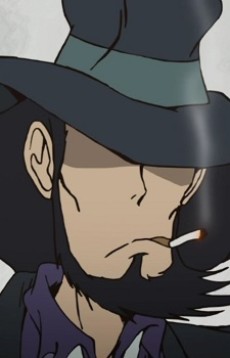
Daisuke Jigen
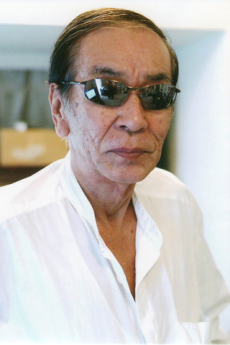
Kiyoshi Kobayashi
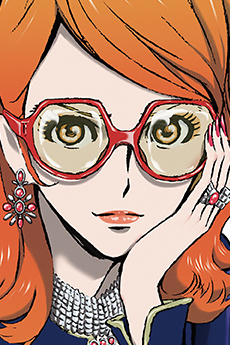
Fujiko Mine

Yukiko Nikaido
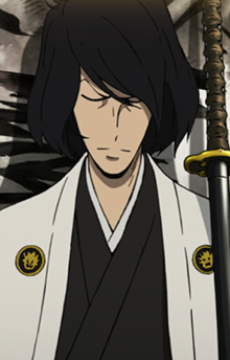
Goemon Ishikawa XIII
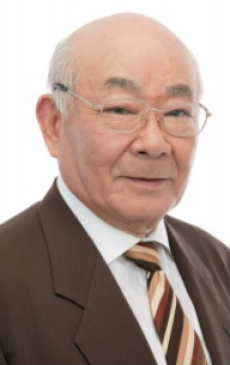
Chikao Ootsuka
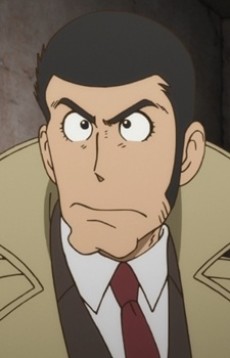
Kouichi Zenigata
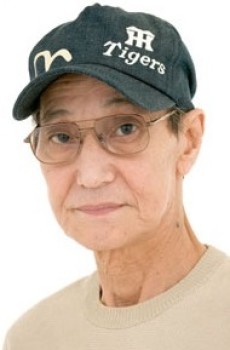
Gorou Naya
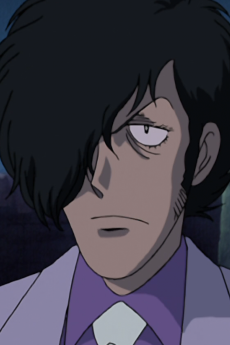
Pycal

Eimei Esumi
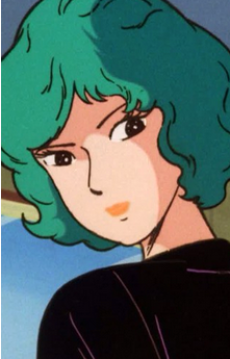
Ginko Hoshikage
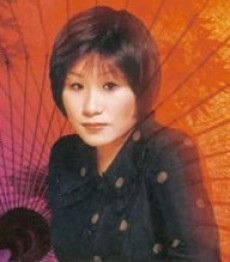
Michiko Hirai
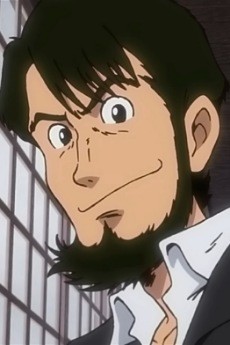
Lupin II
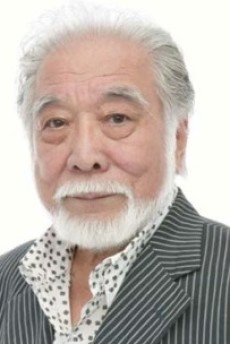
Yonehiko Kitagawa
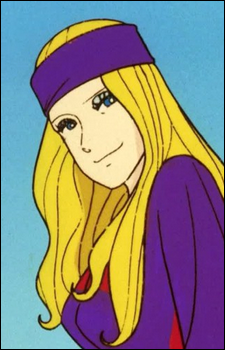
Linda
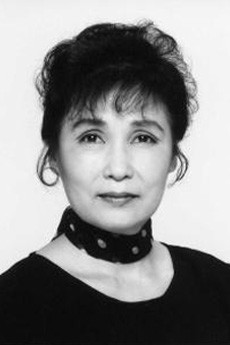
Reiko Mutou
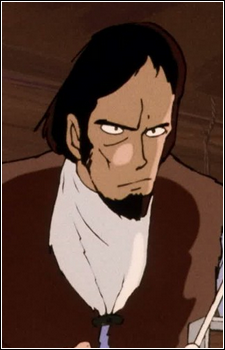
Hayate
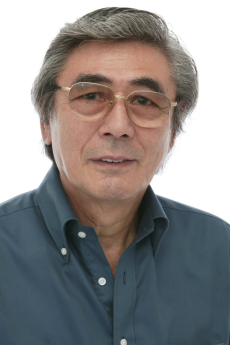
Hidekatsu Shibata
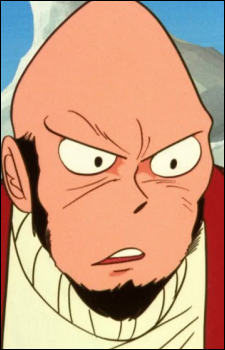
Gantetsu

Kousei Tomita
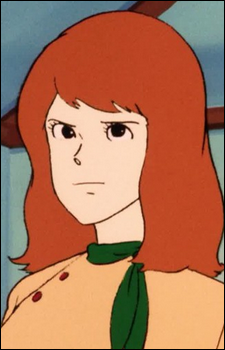
Rie Makita

Michiko Hirai

Silver Fox

Nobuyo Tsuda
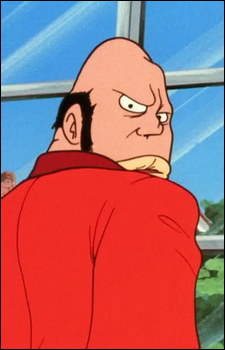
Kamaitachi

Chikao Ootsuka
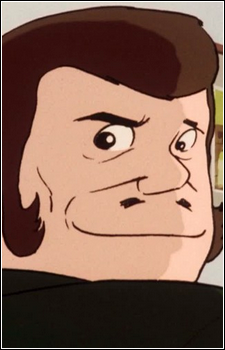
George Takigawa

Kousei Tomita
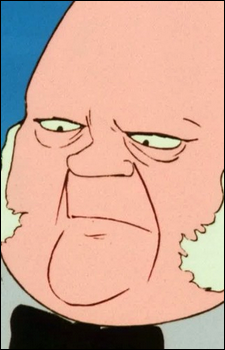
Gold

Ushio Shima
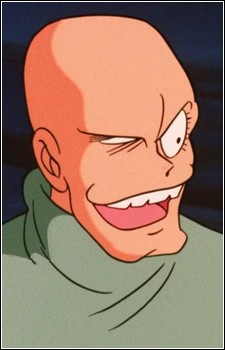
Flinch

Shigeyuki Hosoi
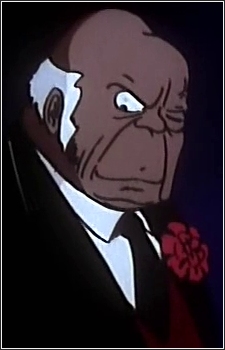
Mister X
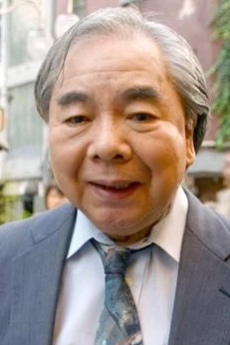
Junpei Takiguchi
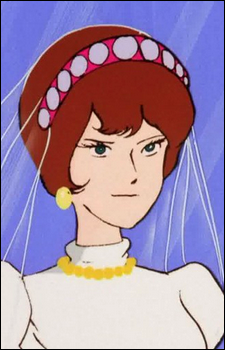
Catherine
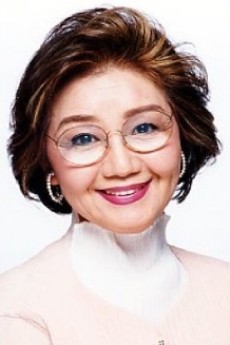
Eiko Masuyama
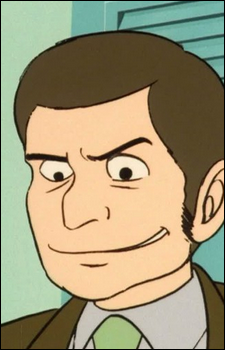
Gordon
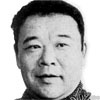
Shingo Kanemoto
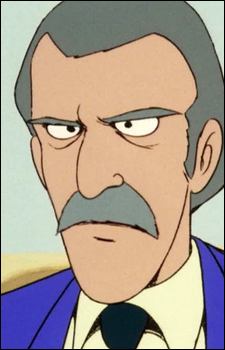
Ken Makita

Isao Sakuma
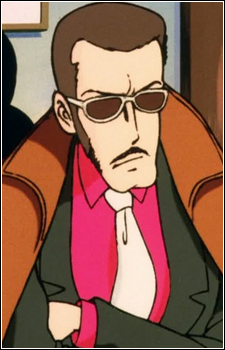
Poon

Jun Hongou
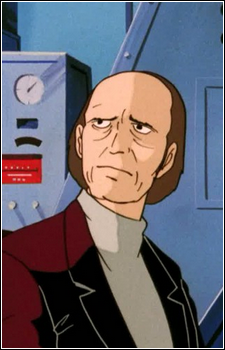
Ivanov
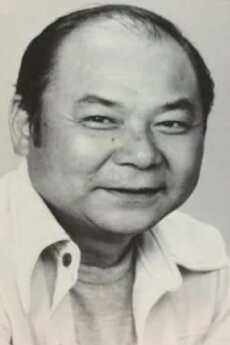
Eken Mine
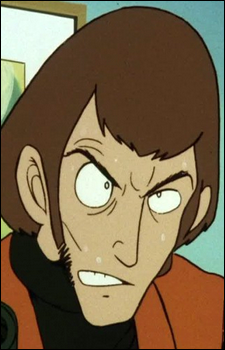
Cap
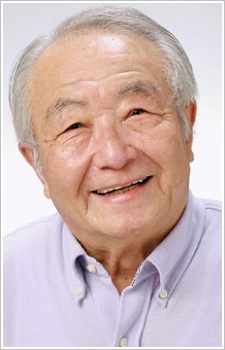
Kazuo Arai

Tatsu

Kei Tomiyama
EPISODES
Dubbed
RELATED TO LUPIN III
 ANIME ActionLupin III: Part II
ANIME ActionLupin III: Part II SPECIAL AdventureLupin III: Alcatraz Connection
SPECIAL AdventureLupin III: Alcatraz Connection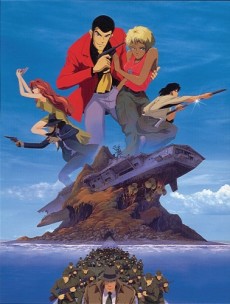 MOVIE AdventureLupin III: DEAD OR ALIVE
MOVIE AdventureLupin III: DEAD OR ALIVE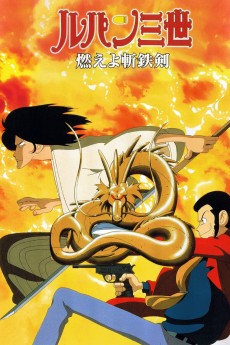 SPECIAL AdventureLupin III: Moeyo Zantetsuken
SPECIAL AdventureLupin III: Moeyo Zantetsuken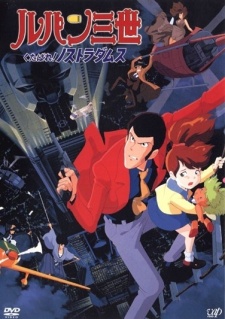 MOVIE AdventureLupin III: Kutabare! Nostradamus
MOVIE AdventureLupin III: Kutabare! Nostradamus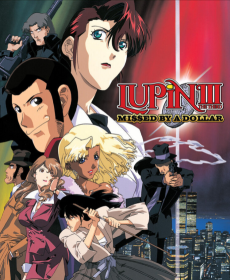 SPECIAL AdventureLupin III: $1 Money Wars
SPECIAL AdventureLupin III: $1 Money Wars OVA AdventureLupin III: Ikiteita Majutsushi
OVA AdventureLupin III: Ikiteita Majutsushi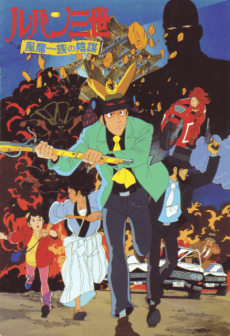 MOVIE AdventureLupin III: Fuuma Ichizoku no Inbou
MOVIE AdventureLupin III: Fuuma Ichizoku no Inbou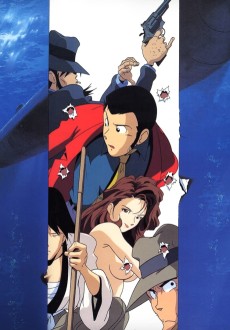 SPECIAL AdventureLupin III: Lupin Ansatsu Shirei
SPECIAL AdventureLupin III: Lupin Ansatsu Shirei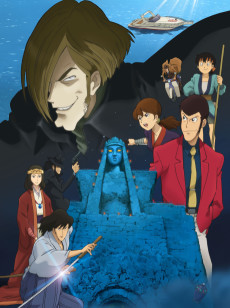 SPECIAL AdventureLupin III: Kiri no Elusive
SPECIAL AdventureLupin III: Kiri no Elusive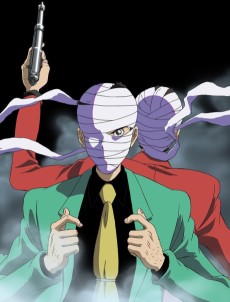 OVA ActionLupin III: GREEN vs RED
OVA ActionLupin III: GREEN vs RED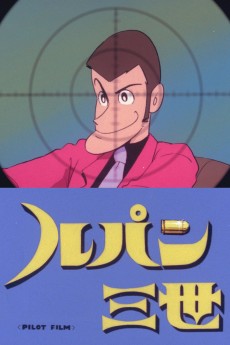 MOVIE ActionLupin III: Pilot Film
MOVIE ActionLupin III: Pilot Film SPECIAL AdventureLupin III: Lupin Ikka Seizoroi
SPECIAL AdventureLupin III: Lupin Ikka Seizoroi SPECIAL AdventureLupin 8-sei
SPECIAL AdventureLupin 8-sei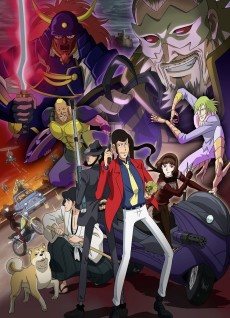 SPECIAL AdventureLupin III: The Last Job
SPECIAL AdventureLupin III: The Last Job SPECIAL ActionLupin III 3DCG
SPECIAL ActionLupin III 3DCG OVA ComedyLupin Shanshei
OVA ComedyLupin Shanshei MOVIE AdventurePanda Kopanda
MOVIE AdventurePanda Kopanda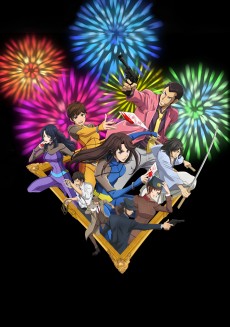 ONA ActionLupin III VS Cat's Eye
ONA ActionLupin III VS Cat's Eye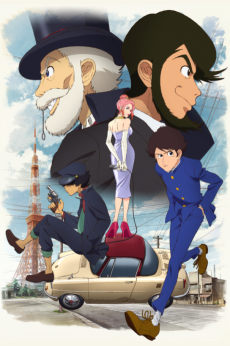 ONA ActionLUPIN ZERO
ONA ActionLUPIN ZERO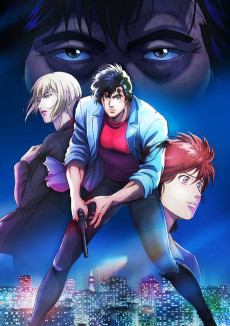 MOVIE ActionCity Hunter: Angel Dust
MOVIE ActionCity Hunter: Angel DustREVIEWS

linajthol
75/100Lupin Sansei - Absolutely a classicContinue on AniListLupin Sansei Part 1 is an absolutely charming and educational anime that all people interested in the history of anime or one of the biggest Japanese franchises should absolutely watch. It holds up very well in certain parts, but is overall a mixed bag that depends on your personal tastes.
As many others have mentioned, this is not only the first official Lupin release, but also the least consistent. It starts out as a gritty and dark crime drama focusing on womanizer thief Lupin the Third and his sharpshooter partner Daisuke Jigen, but slowly progresses into a fun and friendly crime-based comedy that seems to work more like an animated sitcom than the thriller it, at first, set out to be. This is apparently due to network ratings, which showed the first run of Lupin on TV as unfavorable at its worst, and resulted in director Osumi Masaki being given joint directorial duties with (now, well-known names) Hayao Miyazaki and Isao Takahata. Through the talents of Miyazaki and Takahata, Lupin found success as a family-friendly comedy focusing on the hijinks of the Lupin Gang, rather than any violent drama Masaki had in mind. (From what I understand the original manga was also quite dark. Take that as you will.)
This show, as a result, is completely subjective. Will you prefer the hard-boiled beginning, with genuine murder and chaos? Or the goofy and hectic second half, with slapstick and complete ignorance of physics? Personally, I liked aspects of both. At its best, Lupin Sansei Part 1 is enthralling and creative, putting unique spins on spy/crime thriller tropes using its animated medium and various talents. There are some absolutely epic moments from the lead, with his expert gunslinging and escape artistry hidden behind a facade of a humorous and fun-loving gentleman. The comedy hits most of the time, too! Watching Lupin mess with the codgy old Zenigata is a treat in its own right.
The age shows, though. The animation is pretty terrible by today’s standards, though holding true to its roots as an “adult-marketed” cartoon, the guns and cars look absolutely marvelous and, at their best, photo-realistic. Facial features are immediately recognizable and charming. The real drawbacks are in the backdrops and any background characters. They’re more outlines of what should be there than actual backgrounds.
The music, while repetitive, with constant chants of “Rupan the Third!” and “Walther P38,” (Lupin’s trademark gun which he doesn’t use very much) can pump you up or bring sweet closure to a comedic moment depending on the situation. I’d say it’s used very well.
I would have to argue that the staying power of the Lupin III series comes from the character designs and personalities. Over these 23 episodes, with no previous knowledge of the series, I fell in love with Lupin’s heartfelt smile and shining eyes, Jigen’s cranky, but sage advice, with a trigger finger to match, and Fujiko’s demure but malicious tendency to betray everyone. Zenigata’s hard-working demeanor and childish frustration was equally endearing. (As much as Goemon is a well-known mainstay, he isn’t in many of these episodes. Ah well.) The voice cast is phenomenal as well, and most reprised their roles for later seasons.
Is it excellent? No. Is it boring at times, and repetitive? Yeah, sure. Is it a good time for casual viewing? Absolutely. Lots of corny, physics-defying moments, obvious reveals, cheesy one-liners, and great characters adds up to a lovely time machine from 1971 Japan, and I absolutely adored every minute of it! 7.5/10.

myvelouria
85/100Thanks for everything Yasuo Otsuka.Continue on AniListThis review is spoiler fee.
Picture, for a moment, that you are a mangaka by the name of Kazuhiko Kato. The year is 1967 and you’re getting started on a new manga that exists as a contractual obligation more than anything else. Your editor gives you the pen name Monkey Punch to go along with this series and you absolutely hate it. But you think to yourself that it’s fine, you’re only going to work on this manga for about three months. And besides, this “Lupin III” thing isn’t really going to get very far. Right?

1971 was the year that one of anime’s most influential franchises hit television screens for the first time. It was produced by TMS Entertainment, then known as Tokyo Movie Shinsha, with character designs and animation direction by the recently departed Yasuo Otsuka. The series was initially directed by Masaaki Osumi, however due to poor ratings and controversy regarding its gun violence and sexual content he would be replaced by two up and coming directors named Hayao Miyazaki and Isao Takahata. “Lupin III”, commonly referred to as Part 1 or the green jacket series by fans, is one of those anime that has left an impact on the medium that feels irreplaceable. Over the years this franchise has had six TV anime, eleven theatrical films, five OVAs, twenty-seven TV specials, two releases of the original pilot film from 1969, and so much more. Not only did it introduce a wider audience to one of anime’s most iconic casts of characters, it broke ground as the first TV seinen anime and influenced a wide assortment of artists and directors. Among the people who have drawn inspiration from the franchise are Shinichiro Watanabe [“Cowboy Bebop”, “Samurai Champloo”, “Space Dandy”], Hideaki Sorachi [“Gintama”], Sayo Yamamoto [“Yuri on Ice”, “Michiko to Hatchin”], Takeshi Koike [“Redline”], Kazuya Tsurumaki [“FLCL”], Akiyuki Shinbo [“Monogatari”, “Sayonara Zetsubou-sensei”], and Shinichi Watanabe [“Excel Saga”]. I feel like so much has already been said about “Lupin III” and yet I still managed to come across youtube videos declaring it to be “the most underrated anime” and I’ve even discovered people who branded it “unwatchable”. The very idea of this being a hidden gem is rather puzzling to me given its legacy and I simply don’t agree with the sentiment that it’s impossible to enjoy. Not only is this my favorite TV series in the franchise, it is also a work that continues to provide me with things to discuss. So, without further delay, let’s journey into the show that started it all.

Like with the manga this anime tells a series of self-contained adventures starring Arsene Lupin III, the gentleman thief and grandson to the legendary Arsene Lupin. When he isn’t pulling off amazing heists with his partner, Daisuke Jigen, he is dodging Interpol’s Koichi Zenigata, who has devoted his life to putting him behind bars. And where there is treasure the femme fatale Fujiko Mine isn’t too far behind, always ready and willing to use her best assets to secure what she wants. Through his many endeavors he crosses paths with the samurai Goemon Ishikawa XIII, who transforms from an enemy out for Lupin’s head to one of his most valuable friends. If this all sounds simple, it’s because it honestly is and the franchise uses that to its advantage. “Lupin III” is not something that aims to tell a complex and multilayered story, instead the focus is on providing the audience with a series of fun and engaging adventures with these classic characters. Because of the episodic format that it has it allows a lot of freedom to the writers and directors who’ve come into the picture. While this series, as well as its second one, would adapt stories taken directly from the manga there was still a lot of space to shake things up and invent something new. There’s this feeling of broad potential within Lupin’s concept, something that TMS recognized shortly after the manga began serialization as they acquired the rights very quickly. I understand that there are some people who can’t get into episodic anime; however I am not that person. There’s something so enjoyable about an anime that isn’t bound by a specific narrative and can break away to do whatever it feels like.


Perhaps the biggest selling point the franchise has to offer is the main characters and how people work with them. While these aren’t especially deep personalities, they are just so magnetic that the interactions they share keep making me return for more. Ultimately there are certain key characteristics they will consistently have; Lupin’s the sly thief with a soft spot for the cuties as he puts it, Jigen’s the hard boiled sharp shooter, Goemon is the stoic samurai who adheres to tradition in a modern era, Fujiko is the woman loyal to her own desires, and Zenigata is the relentless detective. That said, the way different people have worked with those traits has led to a situation where with each anime there are some qualities that vary. Some versions portray the characters more comically than others, there are some that are darker, versions exist where Lupin and Fujiko have a more romantic relationship, sometimes Zenigata’s more serious and competent, it all really can depend. I’m very rarely left feeling like these versions are less valid than other ones, to me part of the fun in the franchise is seeing the way people mold the characters to suit the story they want to tell.


Even when comparing this anime to the manga there are a lot of changes in place, especially when Miyazaki and Takahata entered the picture. They wanted to remove what they found to be an apathetic tone to the series which led to Lupin being more charming and helpful to those he comes across, making Jigen less cantankerous and a genuine friend to Lupin, having Zenigata be more energetic, Fujiko’s sex appeal being dialed back, and giving her what I lovingly nickname “the Miyazaki haircut”, among other things. Many anime that came later followed the blueprint of Miyazaki and Takahata’s episodes, regardless if they were consistent with the manga. The episodes directed by Osumi weren’t afraid to move away from the manga either. He made changes like having Lupin I and Lupin II be dead when they were surprisingly alive in the manga, not having Jigen and Lupin be childhood friends, having Fujiko be a defined and consistent character when for periods in the manga her name was slapped onto whatever new beautiful woman appeared that week, putting Jigen into stories he wasn’t originally in, skipping out on Monkey Punch’s worst ideas like the terrible teenage Lupin and Lupin goes to college arcs, and not having Lupin be such a ruthless sadist. All of these I believe to be changes for the better. I think people get very hung up on the idea of an anime being completely loyal to what a mangaka creates, even I am guilty of this sometimes, yet I feel like this anime serves as a great example of deviations from the source material bearing great results.

Audiences were not ready for “Lupin III”, the violence and sexuality of the series proved to be too shocking for people in 1971 and the ratings suffered as a result. This isn’t to say those episodes are bad, in fact I think they’re great. Some of them, such as “The Coming of Goemon the Thirteenth” and “One Chance for a Prison Break”, are among my favorites. However, the adult content and morally ambiguous characters were too bold for an era where anime was seen as a children’s commodity. Again, this was the first seinen anime to air on TV. Osumi’s episodes were less extreme compared to the manga, however they did have more of an edge than what people were expecting out of an anime back then. By today’s standards these aren’t shocking; you see more explicit content in “One Piece”. In fact by the end of the 70s you were seeing more provocative content in anime as a whole, including ones aimed at children, yet this was still enough to hurt the initial ratings. TMS decided the best course of action would be to rework the series to appeal to a broader audience, something Osumi did not want to do and so Miyazaki and Takahata entered the picture. The result is the second half of the anime having a noticeably different approach than the first, but I didn’t find this to be especially jarring. Some fans exaggerate the tone shift between the early and later episodes. Many people try to frame this situation as one where TMS sold out the anime’s integrity, even the profile for Osumi on this very site feels written with that perspective in mind. “Osumi was fired by the studio for refusing to adapt the sophisticated series for a children's audience.” They make it sound as if we went from “Goodfellas” to “Shark Tale”. The later episodes are actually quite sophisticated and highly entertaining. In fact my favorite episode in the franchise, “Beware the Time Machine!”, is from this period. Yes it is clear what episodes were by Osumi and which were by that duo, but it isn’t something that taints the experience for me. I like that I have two visions that I can compare and contrast. Plus I feel like one of the secrets to the franchise’s longevity is its ability to adapt and how malleable the premise and characters are. While Miyazaki and Takahata may not have intended this, they did expose that when they retooled the material to suit their own ideas and other directors would take note.

Another major draw to this anime and all other installments is the seiyuu cast. So much of the character’s personalities and charm come through thanks to the performances. This is the first time audiences heard Yasuo Yamada as Lupin. With the exception of 1987’s “The Fuma Conspiracy”, in which the entire voice cast was replaced, he would continue to voice Lupin in all media until his passing in 1995. Yamada had a very distinct sound and a special type of energy that has left me incapable of imagining Lupin sounding any other way. I actually didn’t enjoy the pilot film partly because of his absence, Lupin needs to sound like him. His voice was so perfect for the character that his successor, Kanichi Kurita, ultimately is doing his best to imitate his verbal ticks and I expect whoever takes the role after him will do the same. Jigen’s seiyuu, Kiyoshi Kobayashi, returns from the pilot film and, again with the exception of “Fuma”, he continues performing as him to this day. His voice has changed a lot with age, yet it always feels appropriate for Jigen. I can’t picture him being performed by anyone else. Goro Naya, who was Goemon in the pilot, takes on Zenigata for the first time and it never ceases to impress me that he could play both the serious Zenigata and the goofier one with such ease. He would voice the character until 2010 where he was replaced with Koichi Yamadera. In this series Goemon is not voiced by his primary seiyuu, Makio Inoue, but by Chikao Otsuka, father to the seiyuu Akio Otsuka. I like his voice even if my preference is Inoue, he plays this more serious take on the character very well. And in the role of Fujiko we have a woman named Yukiko Nikaido in place of Eiko Masuyama who played her in the pilot and picked the role back up in the next series. I like Nikaido’s voice a great deal and I’m surprised to see that she didn’t seem to continue voice acting very much beyond this and playing the mother in Takahata’s excellent 1976 anime “Haha wo Tazunete Sanzenri”. While we would see Fujiko and Goemon portrayed by other people following this, I still think the work that was done by Nikaido and Otsuka was very enjoyable and suited what these directors wanted. The sound quality of this anime is a tad muffled, this seems to unfortunately effect all early 70s anime, but you still hear the talent and charisma through it all.

Now, why do people consider this anime to be unwatchable by modern standards? While I disagree with this opinion, I think I know where their issues lie. Part of it does boil down to the fact that with such a large franchise as this you’ll find opinions being all over the place. Some people simply prefer other versions to this one, which is fine as I dislike well-loved installments like “The Mystery of Mamo”. Other people tend to find the tone shift to make this anime lack cohesion, though I already addressed my thoughts on that. The biggest flaw I have with this series is the music. It isn’t a bad soundtrack, the tracks are pretty fun, but they’re extremely dated. To those who don’t know, acclaimed jazz musician Yuji Ohno was not the composer for the first series like he would be for the majority of the franchise’s releases. His pieces are nothing short of spectacular, they’re some of the best tunes in anime history. It feels a little unfair criticizing this anime for not having music it would receive in its next installment, but it does distract me. When watching certain scenes I want to hear “Zenigata March”, “Zantetsuken”, “Magnum Dance”, “Love Theme”, or that iconic theme song, but they don’t exist here. It really does feel like something is missing. This series had music by Takeo Yamashita, who would go on to compose for one of my favorite 70s anime “Gamba no Bouken”. I prefer his work in “Gamba” to his pieces here, it suited that show’s style better. This music makes me think of beatniks and I suppose you could argue that is appropriate for early Lupin, but the smooth jazz we would get at the end of the decade is what I think best suits the mood for it. I know that there was no precedence for what Lupin’s music should sound like at this point, but I find these pieces to be lackluster. Sure songs like “Nice Guy Lupin” and “Afro Lupin 68” are memorable, mostly for their English lyrics, but they’re no “Lovin You (Lucky)” or “Super Hero”.
The other issue people have with this series is the animation. Realistically I don’t go into a 70s anime expecting perfectly fluid animation, but perhaps someone more comfortable with modern anime would be turned off. This show can look stilted and there are some noticeable animation errors, some of these issues are the result of the complicated production while others seem to be due to the limitations of their time. However, I want to offer some defense. By no means am I arguing this is one of the best animated Lupin projects, it isn’t. But I think there are moments where it has some ambition on display. There are some cuts in this that I think look good for their time. Yasuo Otsuka was an animation legend, he was Miyazaki’s mentor and the one responsible for involving him in the project. And he definitely put in the work to make this show look as good as a 1971 production made under these difficult circumstances could be. Comparing it to anime from around this time like “Ashita no Joe” and “Ace wo Nerae!”, two shows that disguise their lack of motion with striking aesthetics, I think the animation is honestly a noticeable improvement thanks in part to Miyazaki’s own cuts. The anime contains occasional scenes animated by him and they stand out in a great way. You’ll see some articulated movements that were uncommon for this time and some interesting car chases where the vehicles move rather nicely. Miyazaki even animated what is the earliest iteration of that iconic pointed toe leap we would later see in “The Castle of Cagliostro”. They aren’t the best cuts he can make, and by the end of the decade with “Future Boy Conan” he would prove how far he could really take a TV anime’s production, but that perfectionism associated with him does sometimes shine through in “Lupin III” even if some other scenes are rather stiff.
If you still aren’t convinced and believe this is too old fashioned for your taste then I’d suggest having a go at the more recent “Lupin III: Part IV” and “Lupin III: Part V” instead.



The interesting thing about this anime is despite all of Miyazaki and Takahata’s efforts, it never was completed. The anime was still doing poorly and it was cancelled before the remaining episodes got made. I think to say this was ahead of its time feels fair. People just didn’t know how to feel about a seinen anime with morally questionable characters, violence, and sex. Audiences needed time to come around to it, and thanks to the frequent reruns of this show during the 70s that cult following was born. It became so big that TMS was able to greenlight “Lupin III: Part II” in 1977 and the rest is history. Considering this was never supposed to be a manga that meant anything beyond fulfilling a contract I’d say that this is an example of how greatness can come from unexpected places. I would even be willing to argue Monkey Punch was one of the luckiest men in anime and manga history. He never could have guessed that this project of his would become a cornerstone of Japanese pop culture. I give him credit for that original spark, but we also need to give credit to the people involved with the show. Otsuka’s designs would influence the aesthetics of so many later Lupin anime and he would act as designer and supervisor on several noteworthy entries, Osumi’s episodes specifically inspired Shinichiro Watanabe when making “Cowboy Bebop” and he would return to the franchise with the TV special “Voyage to Danger”, and Miyazaki and Takahata’s attempts to change the series into something more lighthearted would capture countless people’s imagination and help put them on the map. Like I mentioned in my review for “The Castle of Cagliostro”, Miyazaki helped reinvent what Lupin could be. We still see variation among the different shows, specials, and movies that have been made, but it’s still clear that the franchise as we see it today is working off of several Miyazaki ideas. While “Lupin III” may not be a “Mobile Suit Gundam” or a “Space Battleship Yamato” in terms of scale and subject matter, it very much stands alongside them as essential anime from this decade. I think when some people imagine an essential anime they tend to lean on something that was telling a grander and deeper story, but sometimes a straightforward and simple adventure can achieve that too. When I think about “Lupin III” as a franchise I think of something that has withstood the test of time, despite what many people over the years expected. I think of something that never fails to make me smile, with iconic characters, exciting adventures, and a unique blend of cartoon like fun with wit and coolness. TMS has kept this fire going ever since the original pilot film in 1969 and there is no sign of it stopping anytime soon, and that deserves some real respect. As it has been said many times throughout the franchise, don’t underestimate Lupin.
SIMILAR ANIMES YOU MAY LIKE
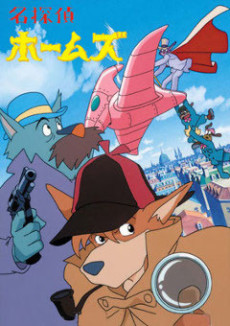 ANIME AdventureMeitantei Holmes
ANIME AdventureMeitantei Holmes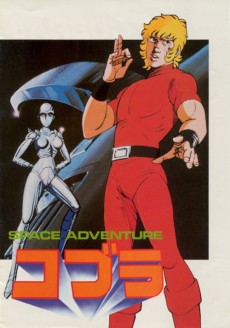 ANIME ActionSpace Cobra
ANIME ActionSpace Cobra ANIME ActionCowboy Bebop
ANIME ActionCowboy Bebop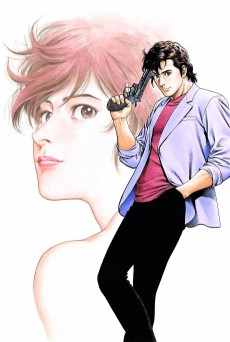 ANIME ActionCity Hunter
ANIME ActionCity Hunter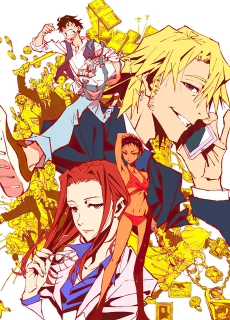 ONA ActionGREAT PRETENDER
ONA ActionGREAT PRETENDER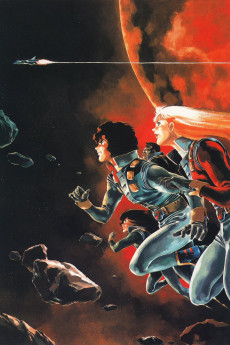 MOVIE ActionCrusher Joe
MOVIE ActionCrusher Joe OVA ActionRiding Bean
OVA ActionRiding Bean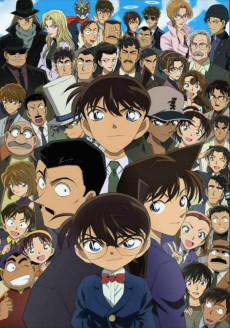 ANIME AdventureMeitantei Conan
ANIME AdventureMeitantei Conan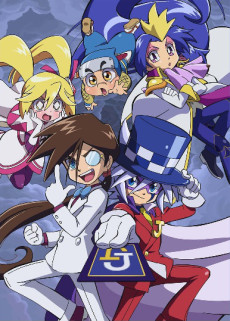 ANIME AdventureKaitou Joker 2
ANIME AdventureKaitou Joker 2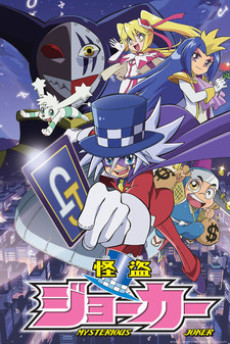 ANIME MysteryKaitou Joker
ANIME MysteryKaitou Joker
SCORE
- (3.7/5)
MORE INFO
Ended inMarch 26, 1972
Main Studio Tokyo Movie Shinsha
Favorited by 552 Users


